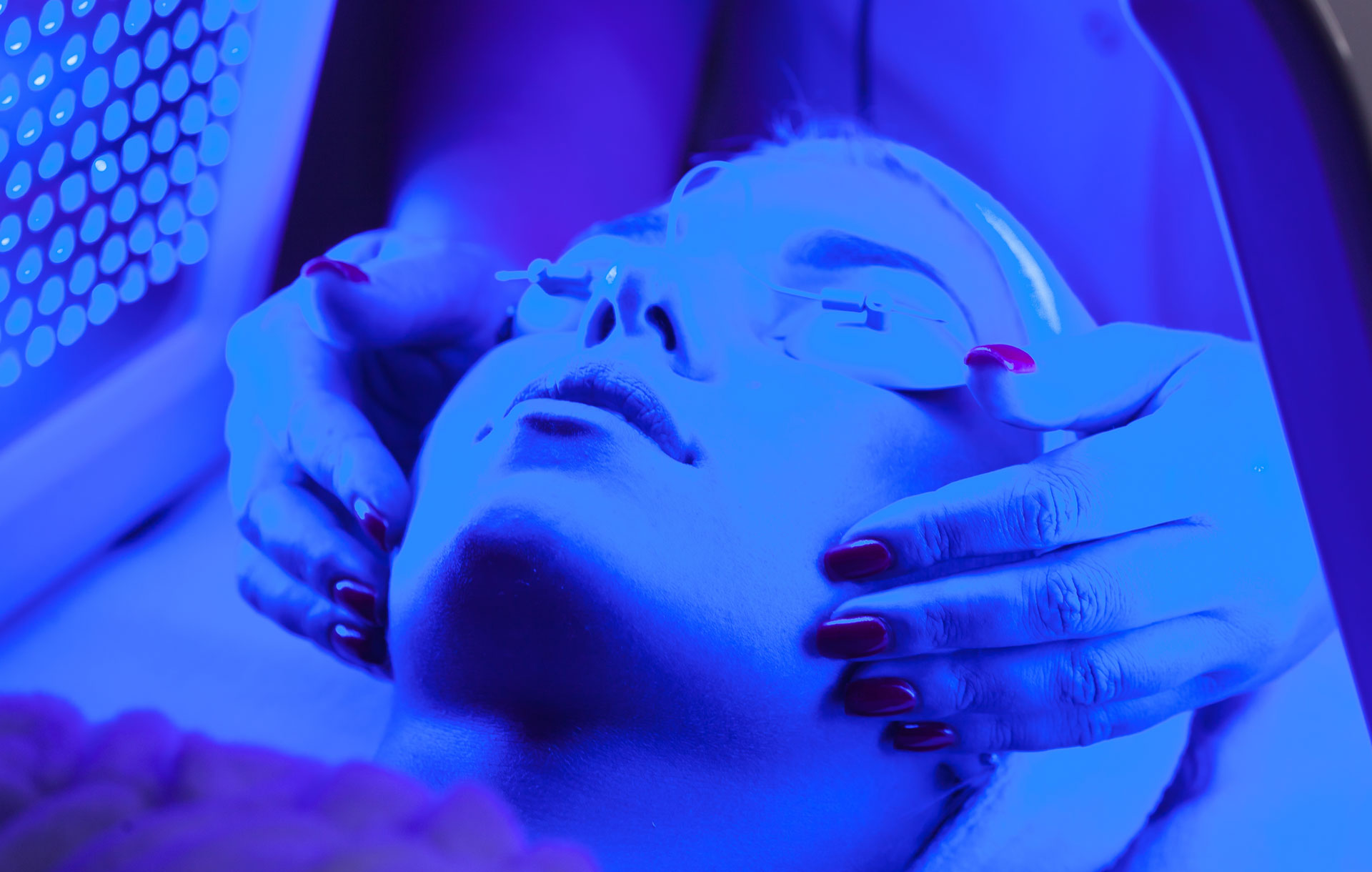The evolution and future of LED Light Therapy
In the concluding sentence of their compendium on the clinical benefits of Low-Level Light Therapy (LLLT), researchers at the Wellman Center for Photomedicine at Massachusetts General Hospital and Harvard Medical School’s Department of Dermatology noted that… “The day may not be far off when most homes will have a light source (most likely a LED device) to be used for aches, pains, cuts, bruises, joints, and which can also be applied to the hair and even transcranially to the brain.
These researchers went on to state . . . “Advances in design and manufacturing of LLLT devices in the years to come will continue to widen the acceptability and increase adoption of the therapy among the medical profession, physical therapists, and the general public.”[1] However, before discussing the future of Low Level Light Therapy, and more specifically the use of LED devices in aesthetics, it is important to understand the biochemical mechanism of actions of LLLT and the history of its commercialization over the past two decades.
Acne Vulgaris
While LASERs and lamp-based light de vices have historically been used to treat acne using a thermal mechanism of action, the LED system utilizes the mechanism of endogenous photodynamic therapy where bacterial porphyrins are produced as part of the normal metabolism of P. acnes and act as natural photosensitizers. When they absorb light, preferably wavelengths in the Blue and Red-light range, the resultant photodynamic reaction produces singlet oxygen species and reactive free radicals, which destroy the bacteria themselves. Essentially, the P. acne bacteria commit suicide.
[ihc-hide-content ihc_mb_type=”show” ihc_mb_who=”2,4,6,7,5″ ihc_mb_template=”3″ ]
Skin Rejuvenation
Fibroblast cells are responsible for producing collagen and elastin, proteins key to good skin health. As we age, fibroblast cells’ ability to produce these proteins becomes compromised, resulting in the appearance of fine lines and wrinkles in the skin. In photodamaged human skin, collagen synthesis is reduced with a concomitant elevation of matrix MMP-1 expression.
“Hence, a possible strategy for treating and preventing the clinical manifestations of skin aging is the restoration of the collagen deficiency by the induction of new collagen synthesis and reduction of [matrix metalloproteinase] MMP[2].” LED devices emitting energy in the Red to Near-Infrared regions of the spectrum have demonstrated in in-vitro, animal, and human clinical studies that LED light therapy can trigger skin collagen synthesis with a concurrent reduction in MMP. A significant increase in collagen production with concurrent MMP-1 reduction has been seen in association with improved appearance of photo-damaged skin.
Dermal Wound Healing
LED light therapy has also been shown to accelerate tissue repair, decrease wound size, and accelerate wound closure as well as other beneficial effects. The mechanisms associated with this process have been well characterized both at the in vitro and in vivo level. These mechanisms have been demonstrated to promote dermal wound healing and reduce the pain associated with the healing process.
History of Commercialization
Late in the last century, British physicist and researcher, Dr. Colin Whitehurst at the Patterson Institute in Manchester, spent more than five years developing an arc light device for the treatment of basal cell carcinomas and squamous cell carcinomas. Photodynamic Therapy, or PDT for short, involves the pre-treatment of the target area with a photosensitive medication that is activated by light energy.
Early in this century, Dr. Whitehurst’s research and his arc light device became the foundation for Manchester-based Photo Therapeutics Ltd and the development of the OmniLux Light therapy device. The OmniLux device had the distinction of being the first to be FDA-cleared for treating a variety of skin conditions. Substituting the arc light technology for newly developed Light Emitting Diodes or LEDs, Photo Therapeutics, as one might expect given its history, introduced monochromatic or single wavelength devices, in the Blue, Red and Near-Infrared light spectrum.
Recognizing that the mechanism of action at play in LLLT is triggered by multiple wavelengths of light energy, at different depths in tissue, and that LLLT did not require a precisely controlled delivery of light energy at peak absorption levels, light therapy manufactures realized that the efficacy of LLLT could be increased by delivering multiple wavelengths simultaneously. More specifically, delivering multiple wavelengths simultaneously would allow for the treatment of different cell types at varying depths of tissue at the same time.
The Future of LED Light Therapy
With a comprehensive understanding of the biochemistry and evolution of LED light therapy, we can now consider what the future has in store for us with LED light therapy. It’s reasonably unlikely that the fundamental biochemistry of Low-Level Light Therapy will change much in the future. While additional mechanisms-of action may be uncovered, the clinical benefits of LED light therapy will continue to be the antibacterial effects in treating acne and the upregulation of collagen production in countering the effects of aging and sun damage on the skin, as well as the increase in cell proliferation and cell migration in accelerating the closure of dermal wounds.
Based on the same mechanism of action, LED light therapy can be effective in hair restoration and has been broadly proven effective in muscu loskeletal pain management, including the treatment of rheumatoid and osteoarthrosis.
The Wellman Center at Harvard University is also conducting extensive research on neuro-stimulation and treatment of conditions such as Parkinson’s, Alzheimer’s, and Traumatic Brain Injuries with promising initial results. “LLLT is steadily moving into mainstream medical practice. As the Western populations continue to age, the incidence of the degenerative diseases of old age will only continue to increase and produce an ever more severe financial and societal burden. Moreover, the particular benefits of LLLT to both the central and peripheral nervous systems suggest that much wider use of LLLT could or should be made in cases of both brain diseases and injuries.”
Dr. David Barolet has conducted research on LED light therapy to prevent sunburn. “The purpose of this pilot study was to test the potential of nonthermal pulsed light-emitting diode (LED) treatments (660 nm) prior to UV exposure in the induction of a state of cellular resistance against UV-induced erythema. Results suggest that LEDbased therapy prior to UV exposure provided significant protection against UV-B induced erythema. The induction of cellular resistance to UV insults may possibly be explained by the induction of a state a natural resistance to the skin via specific cell signaling pathways and without the drawbacks and limitations of traditional sunscreens.”
From a practical perspective, LED devices are becoming more versatile and easier to use on any part of the body. As Michael Hamblin, PhD. notes, “The introduction of affordable LED devices powered by rechargeable batteries will lead to many home-use applications of LLLT. The concept of “wearable” light sources is not far off[6].” One of the ways LED devices are becoming more affordable and more effective is by the use of flexible circuit boards, which allow devices to closely contour to the body part being treated, a key to efficacy. By moving light emission closer to the surface of the skin, the devices do not have to be as powerful, thereby reducing the cost of the device.
Gone are the days of paying $10,000, $15,000 or $25,000 for an effective light therapy device. Marketleading devices can now be purchased for less than $1,500.
Devices are also being configured in different shapes and sizes ideally suited for the primary use of the device, whether that be a “spot treatment”, tended over the face, wrapped around an extremity, or treating the full body. And instead of having a “LED bed” taking up an entire treatment room, large full-body LED devices can lay on the client like a heavy blanket and then put away between uses. Flexible electronic circuitry makes LED devices more user-friendly, making them more reliable and longer-lasting.
As the fundamental clinical benefit of LED therapy is the reduction of inflammation and the increase in micro-circulation, and ultimately cellular healing, the potential applications for LED light therapy devices are practically endless, particularly when the devices can be tailored to a specific body application. As inflammation is at the root of most things that ail us, having an LED device is a must for the beauty and medical aesthetic professional, to speak nothing of every household in the world.
[/ihc-hide-content]













